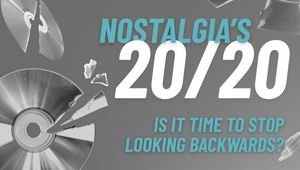
Problem Solved: How DDB Put a Price on Creativity

Earlier this year, the creative team at DDB did something extraordinary. Together with investment and advisory firm Jarden, they launched the Creative Index. The work is a market tracker which measures, as the team behind it describes it, “the economic value of creativity, Australia’s greatest natural resource”.
DDB Group Australia chief creative officer Stephen de Wolf said of the work, “We know the impact industries like mining, technology, manufacturing, and finance make on the stock market. But for too long, the value of our greatest resource – creativity – has been seen as cultural, not economic.
“The Creative Index changes that. It is tangible evidence that creativity has incredible commercial value. And it proves that creativity is the most powerful force in business, worth the investment.”
To find out why and how the agency created something so unusual, so daring, and so complex, I spoke to DDB Melbourne ECD Psembi Kinstan as part of LBB’s problem-solvers series. He walked me through the process behind (and the impact of) this remarkable work.
LBB> And after a bit of digging around, what did you discover the ‘real’ problem to be (and what thinking or research brought you there)?
Psembi> The Creative Index is a live market tracker that tracks the value of companies that rely on creativity for their growth, revealing, in real time, how much money essentially they're worth, and, therefore, how much money they're bringing into the Australian economy.
So much of the discussion in Australian business focuses on the key industries driving Australia, and, outside of our marketing and communications bubble, creativity isn’t mentioned. We don’t talk about manufacturing anymore. We talk about mining, we talk about our natural resources, we talk about financial services, we talk about agriculture - but creativity never bubbles up into that conversation. We love the challenge of going “okay, how can we create something that allows (and hopefully inspires) everyday Australians to consider how creativity is fundamental to the future growth of this economy.
LBB> What was the initial brief or problem set out by the client?
Psembi> The creative index started as a response to the NGV’s Rigg Design Prize, which happens every three years. It goes out to different types of companies, and asks them to respond to a brief. This year, it went to advertising agencies, with the brief of “how do we make Australia understand the power of creativity?” It was as broad as that. At DDB, our agency response was that this is obviously a core challenge for our whole industry. And if we're going to invest time and money and resources into answering it, we need to create something that we believe in and will last beyond the Prize, and become something that DDB can keep using. That was our benchmark for success.
So as I started to see the creative teams’ ideas, one of them had this lovely thought of “What if we created the equivalent of an ESG, or a stock index fund for companies that were creative?” The thinking was that it would do two things: First, it would allow everyday Australians to start to invest money directly into companies that use creativity; but it would also, secondly, allow us to put a financial price figure on the value of creativity to the economy.
LBB> Why does it matter that people understand the value of creativity in this measurable, economic sense?
Psembi> One of the classic Bill Bernbach-isms is that “creativity is the most powerful force in business”. And, as an agency, we believe in that. But it's very hard to prove that worth. Expressing that philosophy as a dollar figure allows us to do just that. As much was, essentially, proved after we built the index, where we found that companies on the index have outperformed companies that don't use creativity. That is something that might affect policymakers and business leaders, and the decisions they make about where to put their money. And then, at some point, the consequences of those decisions will trickle down, not just to advertisers and to brands, but to every individual consumer.
LBB> How on earth did you develop a system to track and evaluate something as complex as “creativity”?
Psembi> Well, once we had the initial idea, we quickly realised that we weren't the experts in defining which companies used creativity, nor were we the experts in putting a dollar figure onto that. So we started working with financial partners; in particular, the firm Jarden (who are a large investment group). We spoke to their analysts, and soon realised that no one had tried to do this before. Fortunately, that excited them.
So their analysts went away and looked into these companies, and determined a set of criteria that would allow us to define if a company is inherently creative. And then we could track the value of those companies, and see how they stack up against companies that don't use creativity in some way
Obviously, defining creativity is kind of a woolly concept. How do you pin it down? They developed several different metrics, one of which has been key, and others whose use has varied from one business or industry to another.
That key thing, which we can track fairly consistently in any ASX 200 company through their annual reports, is investment in R&D, or in developing new technologies or simply new innovations, as a percentage of total revenue. You can create that as a figure.
And then, secondly, we can see the use of IP within companies as well; ie, is a company valuable because it's trading off something that they created in the past?
And then there's the third tier, which is called GICS. This is simply a list of certain companies on the ASX 200, because there are some companies that are inherently creative. Obviously, you look at a company like Nine Entertainment and go “you're a company that relies on the creation of content; you rely on storytelling; you rely on TV creation; you’re an inherently creative company.” But the interesting thing was, there turned out to be lots of companies on that list that, at first glance, you or I might look at and decide “I don't think they're a creative company”. But that's where the analysts came in.
If you look at a company like Treasury Wines, not only have they invested heavily in their branding and marketing team, but, actually, their responses to business challenges have been a very lateral one. So the analysts at Jarden are saying, “okay, look, this is how they behaved when China imposed the different tariffs and restrictions on exporting wine to China. A part of their business went away and they simply said, We're going to grow wine locally in China. And we can blend the Chinese wine with the Australian varietals.” That’s the sort of investigation the analysts did, which allowed us to assemble that list.
LBB> Where did you look for inspiration?
Psembi> The way the credit index is built exactly mirrored the way ESG or comparable sustainability trackers are built. Whilst there are some similarities, in how a business manages its sustainability, every business is different. And there is really no one figure that can be applicable for every business. That's the tricky thing. You have to develop criteria for assessment, and be willing to investigate. It was exactly the same here.
LBB> Tell us a bit about how you launched it?
Psembi> The main launch was an actual physical exhibition where we turned the website on, and then we did a press push from there. There was an ABC TV programme that spoke about it.
LBB> What does the future look like for the index?
Psembi> It’s early days, but things are really bubbling. Without saying their name, an American tech company has since reached out to us and said, “We would like to, perhaps, partner to tell the stories of companies that use our product, and are on your list for their creativity. We can create a content series profiling those companies, focusing on how they use technology and creativity to power their growth.” At the same time, I've been speaking to some colleagues in Canada, and they’ve said to me “we believe in the power of this globally, we would like to pick the brains of your financial analysts and create one in Canada.”
LBB> What's the biggest lesson that you have learned, and are still learning as the Index’s story continues?
Psembi> Creativity exists everywhere outside of what we do in branding and advertising. There is a large number of creative thinkers all across the Australian economy that we don't think about, and we should spend more time thinking about them. If we can tap into their smarts, our ability to transform businesses is absolutely supercharged.
LBB> Any final reflections?
Psembi> It’s been lovely to see a simple idea grow a life of its own. As it's gone out to the world, some of the businesses on it feel a degree of ownership over the whole work, and they’re using it in new ways that we never thought of. That's the best thing about this idea.















